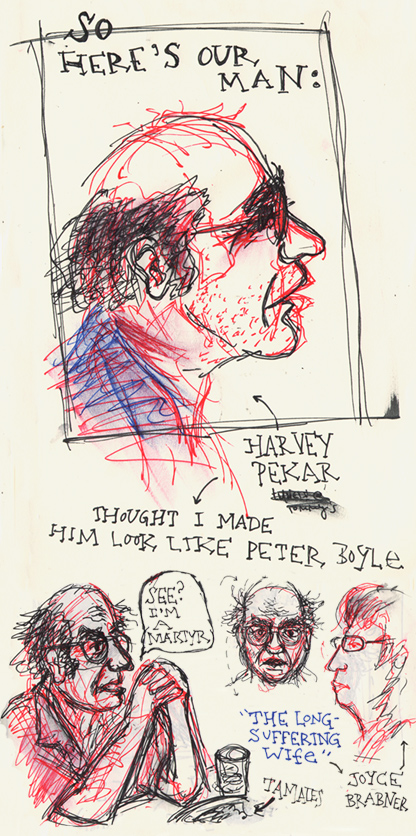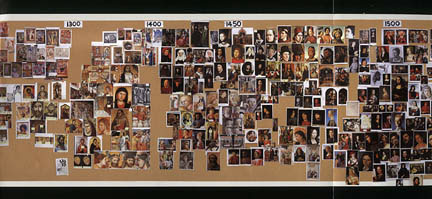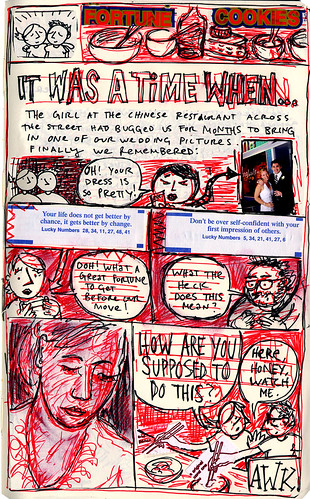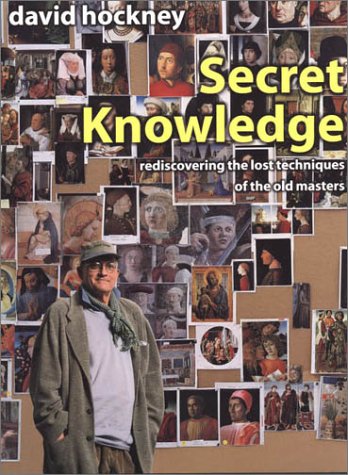
SO MUCH TO LEARN, FROM SO MANY TEACHERS
I was doing the job search thing all morning, doctor’s appointment this afternoon (My doctor was from San Antonio, and he assured me that we would have an excellent time in Austin–the signs continue…), and the reference desk this evening. I have nothing to new to post–only these nuggets of wisdom I’ve gleaned from the corners of the internet:
Maureen McHugh, Ohioan-turned-Austinite, on characterization & plot :
My working definition of plot is character in situation. That’s a dicey definition because I think ‘characterization’ can rest of the flimsiest of textual tricks. A lot of what we think of as characterization comes from what cognitive psychologists call Theory of Mind. (That’s part of what autistic people struggle with and to not have a Theory of Mind is to be Mindblind.) Humans are highly social creatures and we spend a lot of time assuming that other people are, in fact, other people. That they have intentionality, emotion, and that we have a sense of what they are about….
We are so hardwired to make assumptions about other people’s interior states, that we make assumptions about all sorts of interior states. We personify stuff. We describe houses as ‘happy’ or ‘gloomy’. We think that the grocery cart has it in for our car door. We think that characters in fiction are people. We can leap to rather complex assumptions about them on the basis of fairly flimsy details. The details that we find most telling tend to be their actions. So in fact, part of character is what I describe them doing, and if I think of situation and describe characters acting in the situation, I am in fact characterizing as much as I am generating plot.”
* * *
More on plot, sent to me by Brandon, from John Fowles’, The French Lieutenant’s Woman, pg. 406:
The one want combats the other want, and fails or succeeds, as the actuality may be…the writer puts the conflicting wants in the ring and then describes the fight — but in fact fixes the fight, letting that want he himself favors win. And we judge writers of fiction both by the skill they show in fixing the fights (in other words, in persuading us that they were not fixed) andby the kind of fighter they fix in favor of: the good one, the tragic one, the evil one, the funny one, and so on.
“But the chief argument for fight-fixing is to show one’s readers that one thinks of the world around one — whether one is a pessimist, an optimist, what you will.”
* * *
Jordan Crane on splash pages and uniform panel size in an interview with Tom Spurgeon:
I feel like having each panel the same size and the same number on the page, the same spacing and all that, kind of relegates the story to everything that happens inside the panels. The sensational things, the high points and the low points, and the extra dramatics rely on the narrative flow rather than drawing it bigger. So that’s what I tried to focus on: the content of the panels rather than drawing it really big, relying on that. That had always really bothered me in comics. Splash page: this means it matters. This part is important. It always really bugged me….
Oh, God, reading modern superhero comics, none of it makes any fucking sense. It’s not a language. It’s just a bunch of drawings where you can read the words and string it together narratively and get through it. But there’s no language, there’s no punctuation, there’s nothing that makes formal sense about it.
It’s worth noting that Sammy Harkham, Crane’s studio mate, makes similar arguments.
* * *
Tony Millionaire on cartooning and deadlines, from a fantastic profile in the NYTimes
No matter what, I’ve got to get my weekly ‘Maakies’ out….That’s my soul. Without it I’d still be a bum, I’d still be drawing houses. I needed a deadline. That’s the code of the cartoonist: make the deadline.”
* * *
And finally, be sure to check out Craig Thompson’s gorgeous sketchbook pages on his new blog. My favorite of his books, Carnet de Voyage, or Travel Journal, is this times two-hundred and twenty-four.
SATURDAY NIGHT CHINESE
DAVID HOCKNEY’S SECRET KNOWLEDGE: COLLAGE AND THE RETURN TO AWKWARDNESS
I came to David Hockney’s Secret Knowledge, like many other beautiful books, by way of Edward Tufte. It’s a fantastic book with the basic thesis that from the early 1400’s on, painters and artists were employing the aid of optics (mirrors, glasses, lenses) to achieve a new stunning realism. If you want a great introduction/summary of the findings in the book, Lawrence Weschler’s article, “Through the Looking-Glass: Further adventures in opticality with David Hockney,” is available for free in full-text with color photos from The Believer online.
While I enjoy the mind-blowing content of his argument, what I enjoy most is Hockney’s way of looking. He came about his thesis by comparing color photocopies of 400 years of paintings and drawings side-by-side in a gigantic graphic collage timeline:
[Hockney] cleared the long two-story high wall of his hillside studio (the studio retains the general dimensions of the one-time tennis court over which it was built), installed a photocopier in the middle of the space, and, drawing on his brimming private horde of art books and monographs, effectively proceeded to photocopy the entire history of European art, shingling the images one atop the next–1300 to one side, 1750 to the far other, Northern Europe on top, Southern Europe below–a vast, teeming pageant of evolving imagery (and in some ways Hockney’s most ambitious photocollage yet).

It was from this gigantic collage that he was able to pinpoint a period at which painting seemed to change — somewhere around 1430, painting obtained an “optical” look.
Hockney argued that that look dominated European painting for centuries–just how far back he wasn’t yet sure–and that it only lost its hold on Western artists with the invention of the chemical process, in 1839, after which painters, now despairing of matching the chemical photograph for optical accuracy, finally fell away: awkwardness returned to Western painting for the first time as generation after generation of artists –impressionists, expressionists, cubists and so forth–endeavored to convey all the nuances of lived reality (time, emotion, multiple vantages, etc.) that a mere photograph couldn’t capture.
The wall, or art history from 1400-1900 becomes a three-part story: you have pre-optics (awkwardness), optics (the disappearance of awkwardness), and post-optics (the return of awkwardness).
“Awkwardness,” Hockney was saying, wheeling around, “the disappearance of awkwardness, the invention of chemical photography, and the return of awkwardness. The preoptical,” he wheeled once more, “the age of the optical, and then the post-optical, which is to say the modern. And look here.” He led me over to the corner where the two ends of the procession abutted. On the one wall he’d posited, as endpoint, Van Gogh’s portrait of Trabuc (1889); next to it, on the other, was a Byzantine mosaic icon of Christ from about 1150.

These two images together just blow my mind. It just makes so much sense. Here we are in a world where everything can be captured in perfect detail from a camera, and it takes the human hand to render it in some kind of form that actually seems closer to our experience. We don’t see life from one fixed-focus lens. We see it from two eyeballs, two ears, etc. And this is why, I think, we still love the human awkwardness of cartoons, or abstracted drawings: it can produce an experience that a photograph can’t.
Anyways, there’s a ton of other great stuff in Hockney’s book and Weschler’s article. Highly recommended.
GET DON ON THE REAL WORLD
More out of bored amusement than a genuine thirst for fame and humiliation, my buddy Don is trying to get casted for the Real World. Check out his application video that is from a New Year’s celebration we had, in which he shouts obscenities, plays the guitar, and quotes John Lennon.
- ← Newer posts
- 1
- …
- 548
- 549
- 550
- 551
- 552
- …
- 635
- Older posts→

